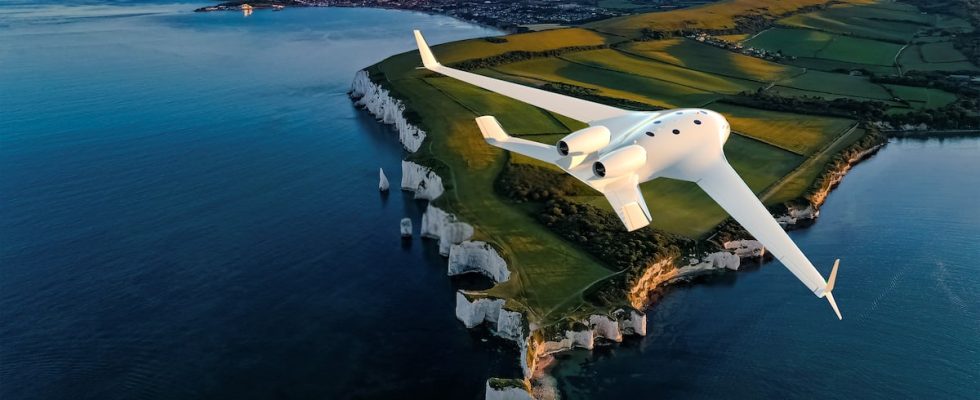Bombardier’s big boss, Éric Martel, recently revealed that a large drone has been secretly flying in Canada since last year to help the company develop the business jet of the future.
• Read also: Toto Wolff becomes ambassador for Bombardier
• Read also: Aid to businesses: a bill of nearly $4 billion over ten years
“We currently have a demonstration model – a drone – with a wingspan of 18 feet [5,5 mètres] who flies secretly to Canada,” he told the American magazine Aviation Week.
The prototype is part of the EcoJet research program, launched by Bombardier around 10 years ago. Since 2017, an almost identical drone, but smaller in size – 2.4 meters (8 feet) in wingspan – has carried out numerous flights in North America.
The second prototype of Bombardier’s EcoJet drone has a wingspan (width) of 5.5 meters (18 feet).
With the larger drone, the aircraft manufacturer obtains data that is closer to a real flight situation for a business jet. Both prototypes feature jet engines, but Bombardier does not rule out that its future business jets will be hybrid or even fully electric.
The biggest in the country
“We think we are the first to fly a drone this big and this heavy in Canada. It is probably also the fastest that has ever been put into flight in Canadian airspace,” underlines Benoit Breault, director of research and technology at Bombardier.
“Everything that is “planes of the future” falls right in my backyard,” he adds. For me, it’s a little boy’s dream… I’m very lucky to do what I do!”

Benoit Breault
Photo provided by Bombardier
The particularity of Bombardier’s EcoJet drones is that their wings are fully integrated into the fuselage. Result: significantly smoother aerodynamics which alone provides fuel savings of around 20%.
- Listen to the interview with Michel Juneau-Katsuya, former senior intelligence officer and manager at CSIS, via QUB radio :
“We think this is the aviation of the future at Bombardier,” says Mr. Breault.
“One of the technical difficulties we have is that we have to learn how to make this new aerodynamic form fly,” he explains. Hence this secret flight test program, which must last for a few more years.

A close-up of the second EcoJet prototype, with a wingspan of 5.5 meters.
Photo provided by Bombardier
Difficult to spotter
Few Canadians have had the chance to see Bombardier’s unmanned drones in real life. Their flights usually take place in remote locations…far from curious onlookers and industrial spies.
Under Transport Canada rules, Bombardier’s experimental drones can only fly in areas where there are no inhabited buildings.
“And we absolutely must close the airspace during the tests,” notes Benoit Breault.
That said, it is not impossible that an onlooker could see one of Bombardier’s drones.
“Once the plane leaves, it’s on the runway, it’s difficult to walk around with a black sheet [pour le cacher], says Mr. Breault. That’s a bit why we don’t reveal exactly where he’s walking. But if there were people who found themselves in the right place and at the right time, they would definitely see it.”

The first prototype of the EcoJet, with a wingspan of 2.4 meters.
Photo provided by Bombardier
Not before 10 years
It will be at least ten years before the aerodynamic innovations tested by Bombardier drones are found in aircraft in service.
But already, Bombardier says it is benefiting from the EcoJet program, which piques the curiosity of aeronautics students and suppliers, among others.
“There are a lot of people who choose Bombardier on the basis of the EcoJet,” maintains Benoit Breault.
Bombardier refuses to say how much it has invested in the project so far, but Mr. Martel told Aviation Week that he currently received “the largest share” of the company’s investments in research and development.
